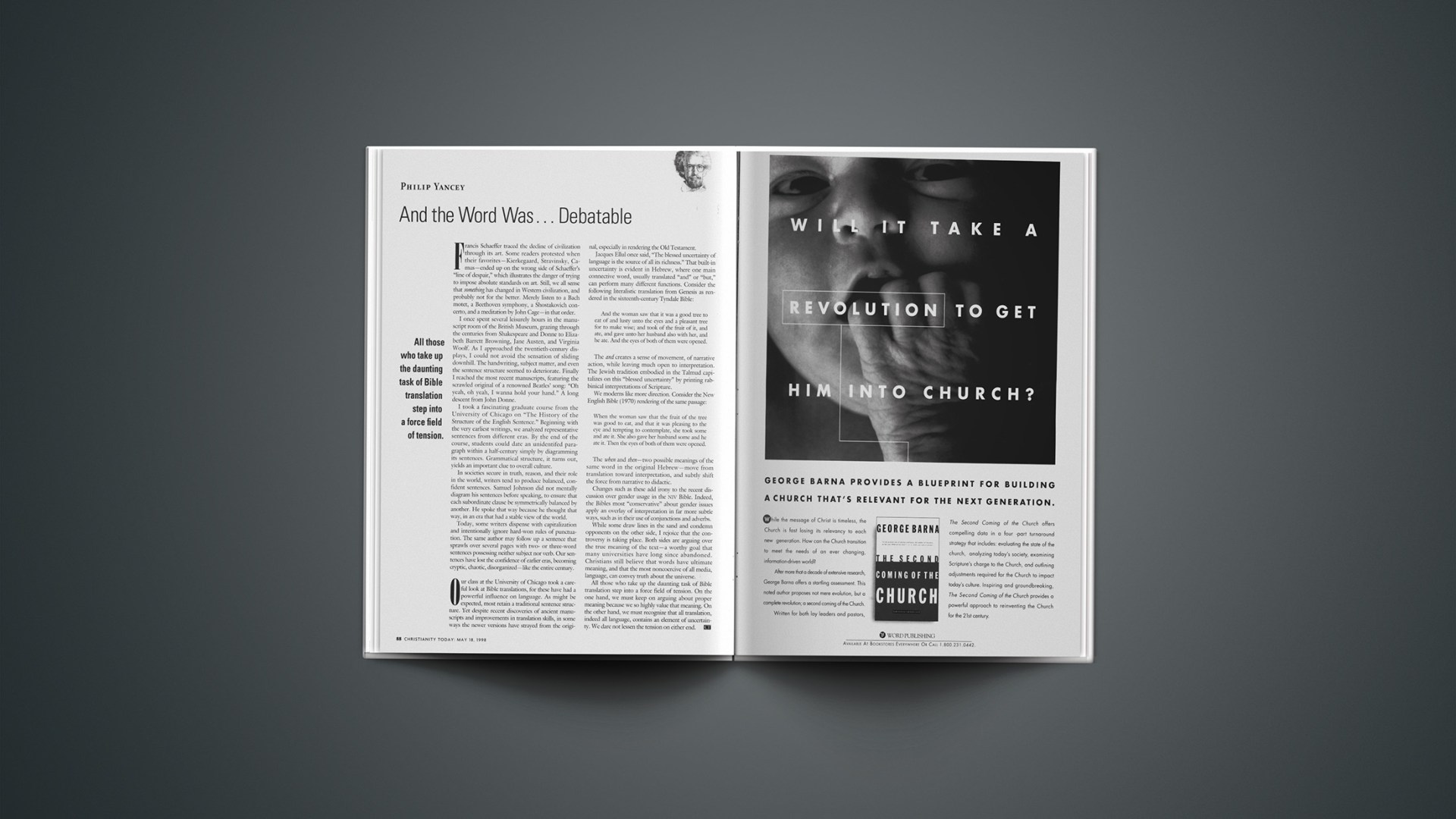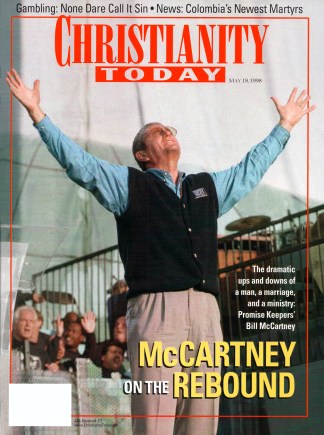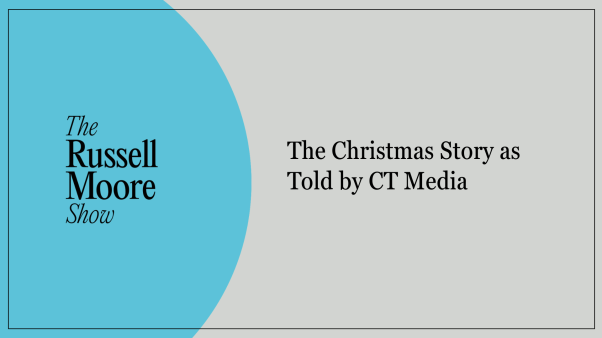Francis Schaeffer traced the decline of civilization through its art. Some readers protested when their favorites—Kierkegaard, Stravinsky, Camus—ended up on the wrong side of Schaeffer’s “line of despair,” which illustrates the danger of trying to impose absolute standards on art. Still, we all sense that something has changed in Western civilization, and probably not for the better. Merely listen to a Bach motet, a Beethoven symphony, a Shostakovich concerto, and a meditation by John Cage—in that order.
I once spent several leisurely hours in the manuscript room of the British Museum, grazing through the centuries from Shakespeare and Donne to Elizabeth Barrett Browning, Jane Austen, and Virginia Woolf. As I approached the twentieth-century displays, I could not avoid the sensation of sliding downhill. The handwriting, subject matter, and even the sentence structure seemed to deteriorate. Finally I reached the most recent manuscripts, featuring the scrawled original of a renowned Beatles’ song: “Oh yeah, oh yeah, I wanna hold your hand.” A long descent from John Donne.
I took a fascinating graduate course from the University of Chicago on “The History of the Structure of the English Sentence.” Beginning with the very earliest writings, we analyzed representative sentences from different eras. By the end of the course, students could date an unidentifed paragraph within a half-century simply by diagramming its sentences. Grammatical structure, it turns out, yields an important clue to overall culture.
In societies secure in truth, reason, and their role in the world, writers tend to produce balanced, confident sentences. Samuel Johnson did not mentally diagram his sentences before speaking, to ensure that each subordinate clause be symmetrically balanced by another. He spoke that way because he thought that way, in an era that had a stable view of the world.
Today, some writers dispense with capitalization and intentionally ignore hard-won rules of punctuation. The same author may follow up a sentence that sprawls over several pages with two- or three-word sentences possessing neither subject nor verb. Our sentences have lost the confidence of earlier eras, becoming cryptic, chaotic, disorganized—like the entire century.
Our class at the University of Chicago took a careful look at Bible translations, for these have had a powerful influence on language. As might be expected, most retain a traditional sentence structure. Yet despite recent discoveries of ancient manuscripts and improvements in translation skills, in some ways the newer versions have strayed from the original, especially in rendering the Old Testament.
Jacques Ellul once said, “The blessed uncertainty of language is the source of all its richness.” That built-in uncertainty is evident in Hebrew, where one main connective word, usually translated “and” or “but,” can perform many different functions. Consider the following literalistic translation from Genesis as rendered in the sixteenth-century Tyndale Bible:
And the woman saw that it was a good tree to eat of and lusty unto the eyes and a pleasant tree for to make wise; and took of the fruit of it, and ate, and gave unto her husband also with her, and he ate. And the eyes of both of them were opened.
The and creates a sense of movement, of narrative action, while leaving much open to interpretation. The Jewish tradition embodied in the Talmud capitalizes on this “blessed uncertainty” by printing rabbinical interpretations of Scripture.
We moderns like more direction. Consider the New English Bible (1970) rendering of the same passage:
When the woman saw that the fruit of the tree was good to eat, and that it was pleasing to the eye and tempting to contemplate, she took some and ate it. She also gave her husband some and he ate it. Then the eyes of both of them were opened.
The when and then—two possible meanings of the same word in the original Hebrew—move from translation toward interpretation, and subtly shift the force from narrative to didactic.
Changes such as these add irony to the recent discussion over gender usage in the niv Bible. Indeed, the Bibles most “conservative” about gender issues apply an overlay of interpretation in far more subtle ways, such as in their use of conjunctions and adverbs.
While some draw lines in the sand and condemn opponents on the other side, I rejoice that the controversy is taking place. Both sides are arguing over the true meaning of the text—a worthy goal that many universities have long since abandoned. Christians still believe that words have ultimate meaning, and that the most noncoercive of all media, language, can convey truth about the universe.
All those who take up the daunting task of Bible translation step into a force field of tension. On the one hand, we must keep on arguing about proper meaning because we so highly value that meaning. On the other hand, we must recognize that all translation, indeed all language, contains an element of uncertainty. We dare not lessen the tension on either end.
Copyright © 1998 Christianity Today. Click for reprint information.










